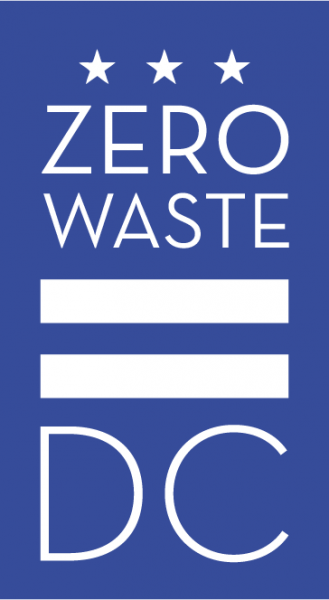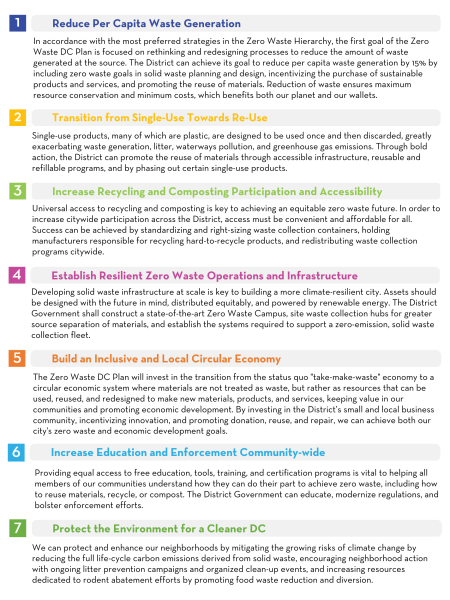About the Plan
The Zero Waste DC Plan, comprised of 43 actions and organized under 7 overarching goals, describes the combination of policies, programs, and actions that the city must take to achieve zero waste, and is presented as a strategic roadmap for cost-effective, sustainable solid waste management.
Individually, the actions in the Plan all have unique and measurable environmental and economic costs, and benefits. However, when implemented together, these 43 actions will achieve the following by the year 2040:
-
Reduction of the citywide solid waste stream by 18%;
-
Citywide waste diversion rate of 80%; and
-
Greenhouse gas (GHG) emissions reductions of 1.38 million metric tons of carbon dioxide equivalent (MTCO2e).
The Zero Waste DC Plan can be read in its entirety by clicking on the attachment at the bottom of this page.

Development Process
The methodology for developing the Zero Waste DC Plan followed five primary steps:
-
Assembly of background data and information, including solid waste and financial cost data.
-
Research of existing Zero Waste policies, programs, and best practices locally and from around the world.
-
Engagement with District residents, businesses, and governemnt partners, with the goal of centering community perspectives and desires into each action.
-
Execution of a comprehensive Benefit Cost Analysis (BCA), in order to systematically estimate and compare the expected costs to the District Government to implement the actions in the Plan, as well as the expected benefits including cost savings, waste diversion, and greenhouse gas emissions reduction.
-
Modeling of the projected waste diversion performance over the planning and implementation period of 2023 to 2040. The Zero Waste DC Plan provides a roadmap of steps the District must take to acheive zero waste.
Goals
The Plan follows the principles of a Zero Waste Hierarchy which describes the progression of most-preferred to least-preferred strategies to reduce waste by prioritizing systemic redesign, reduction, and reuse activities, followed by recycling and composting.
Previously established zero waste goals and actions derived from exisiting District Government plans and laws are the foundation of the Plan and were incorporated to the extent practicable, including the Sustainable DC 2.0 Plan and the Zero Waste Omnibus Amendment Act of 2020.
The 7 overarching goals of the Zero Waste DC Plan are describe below:
Read the Zero Waste DC Plan by clicking the attachment at the bottom of the page.


